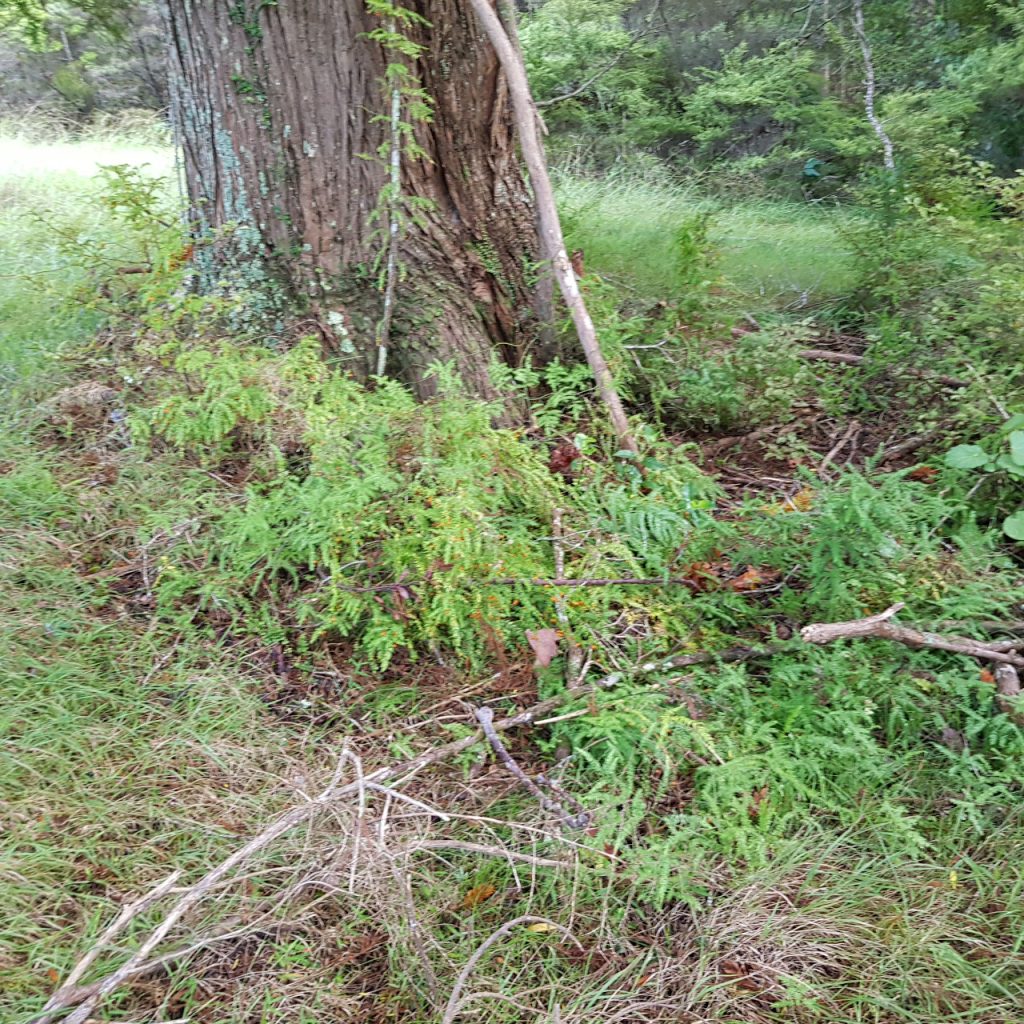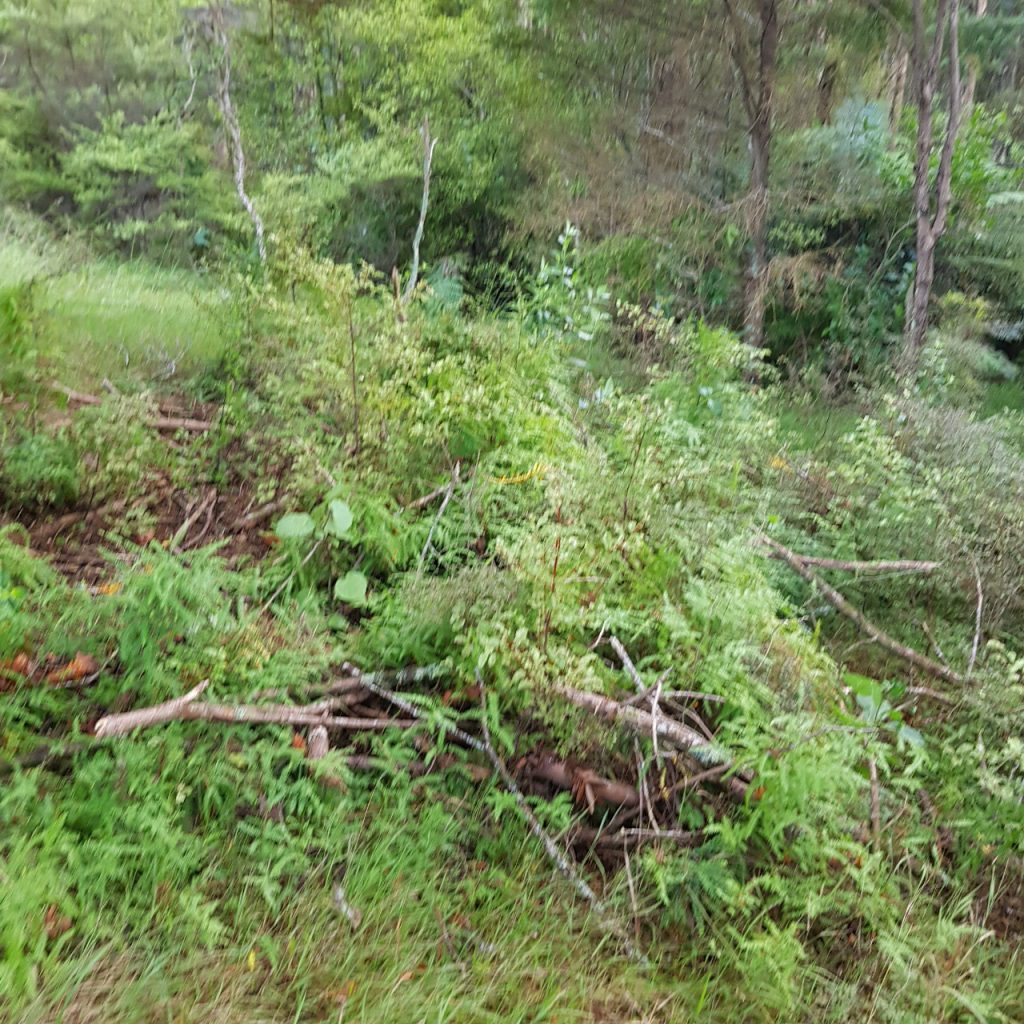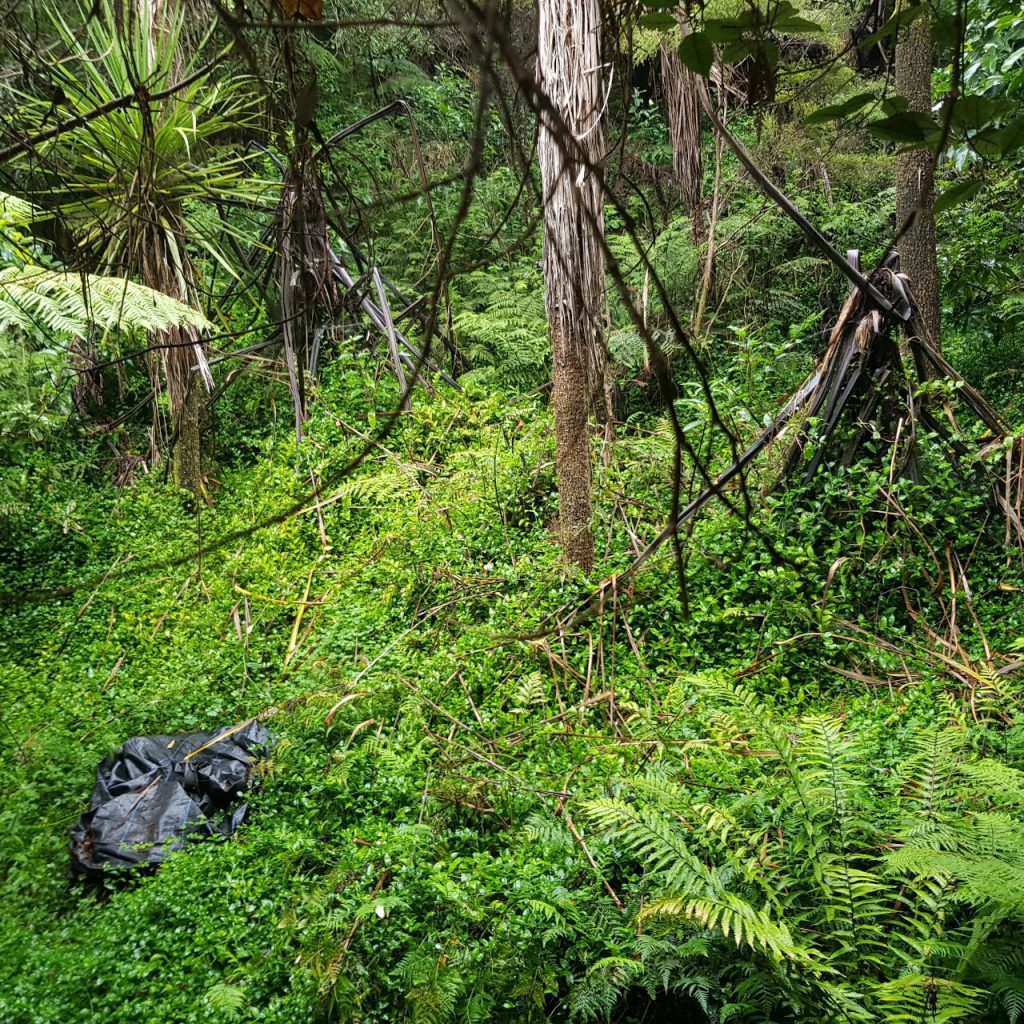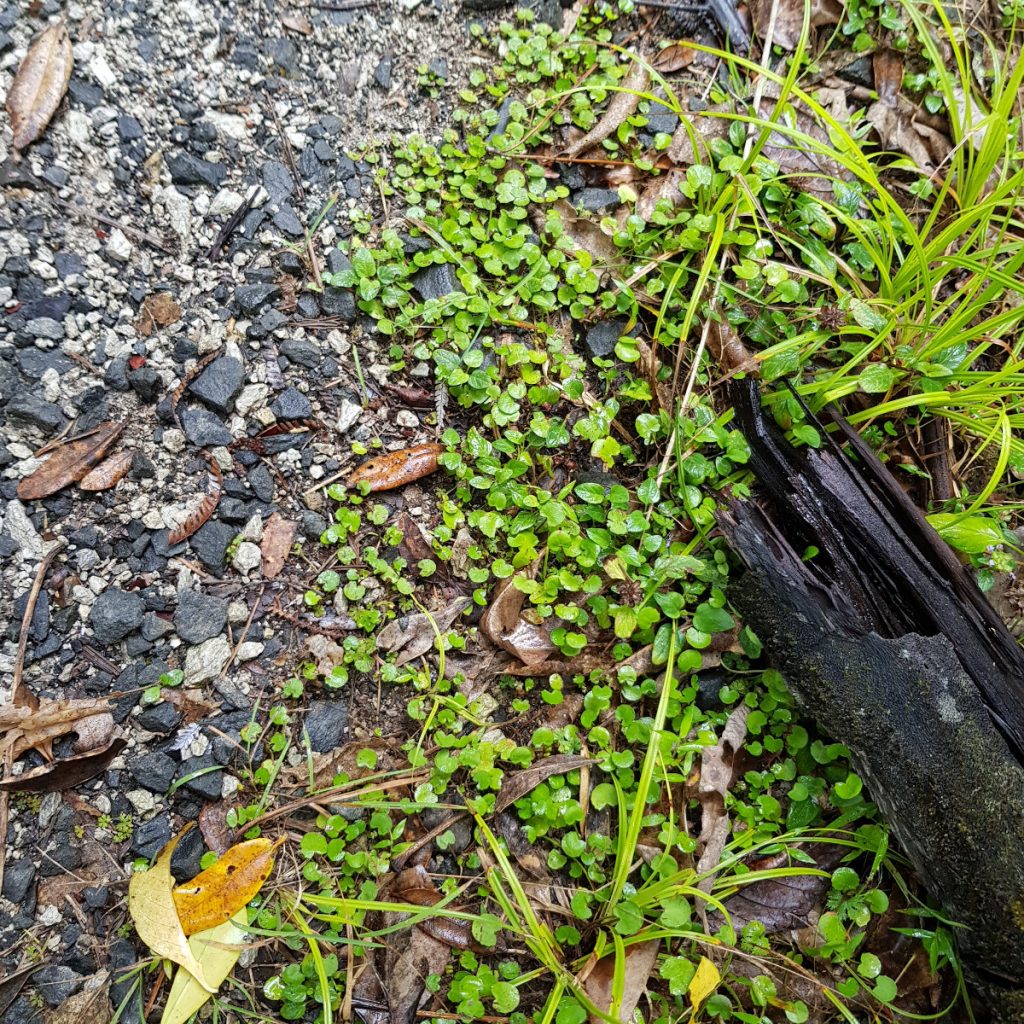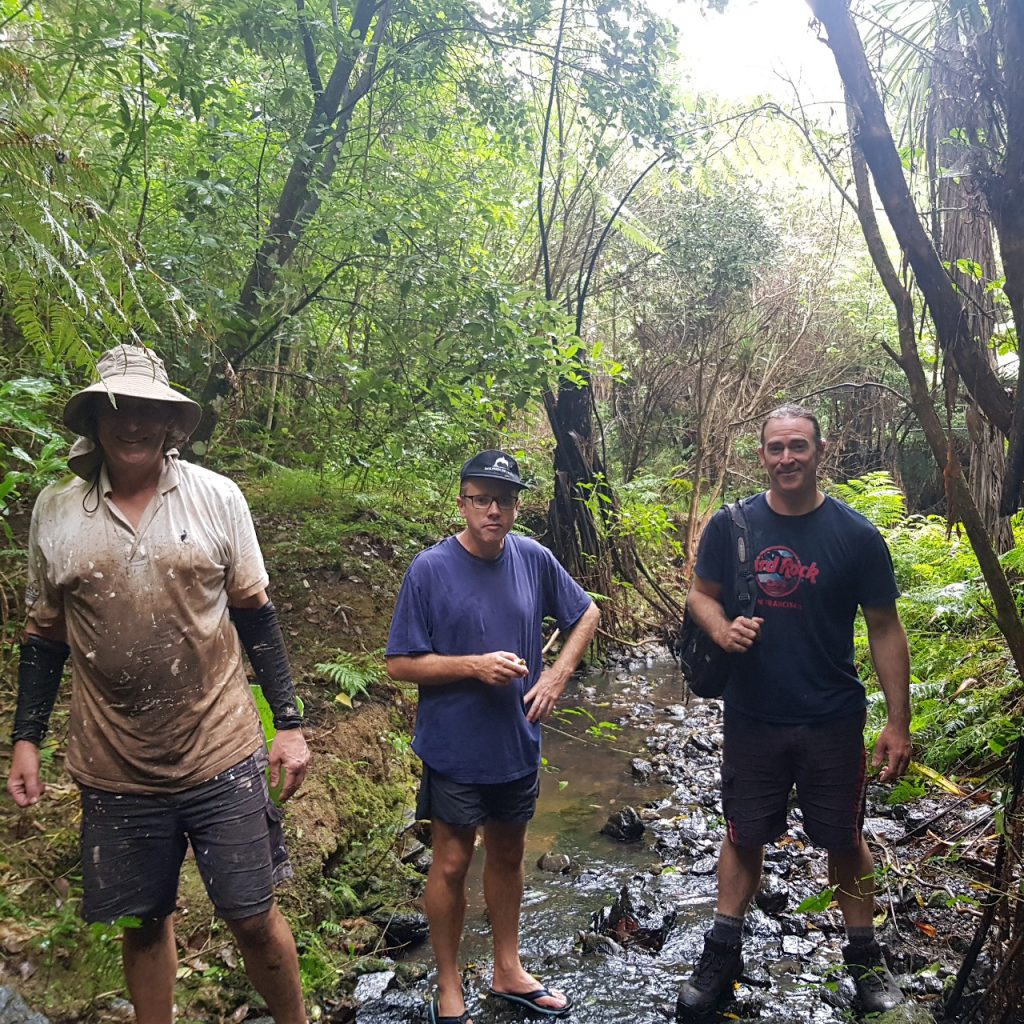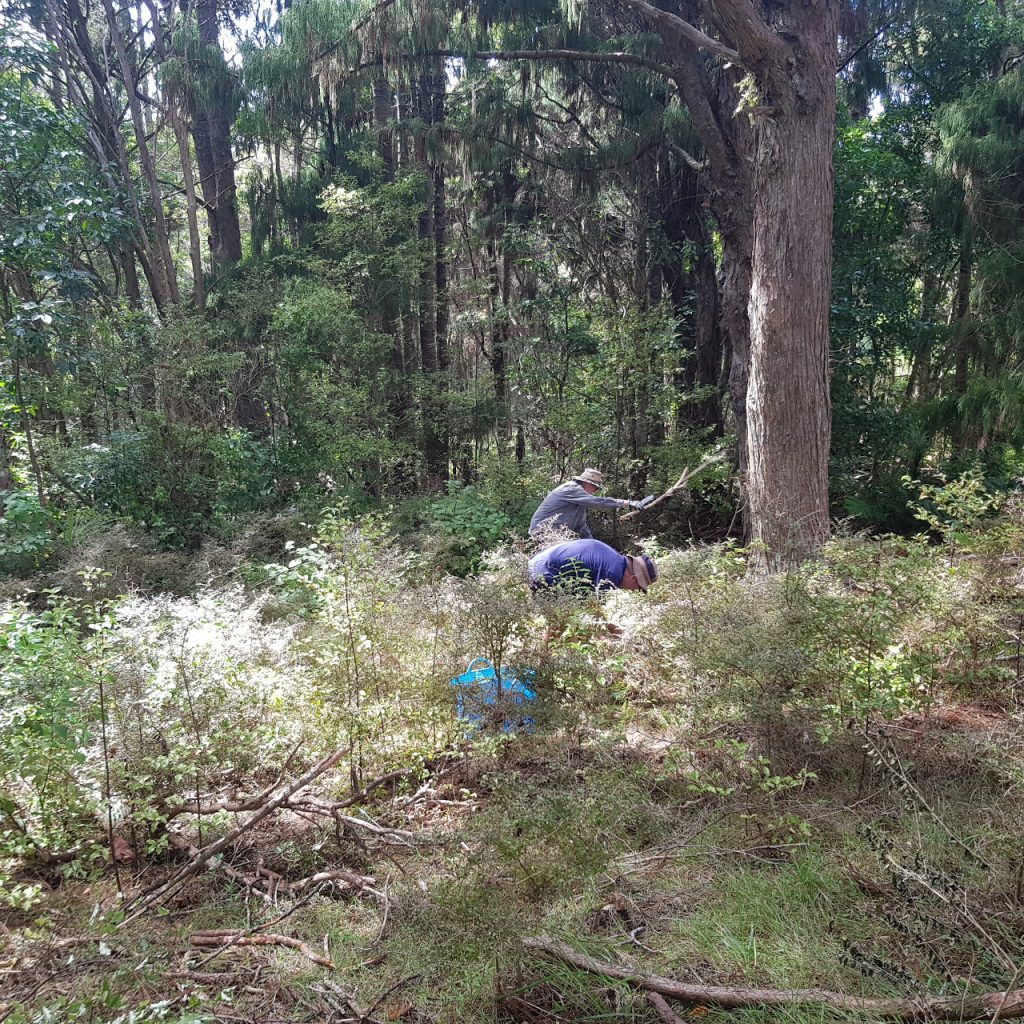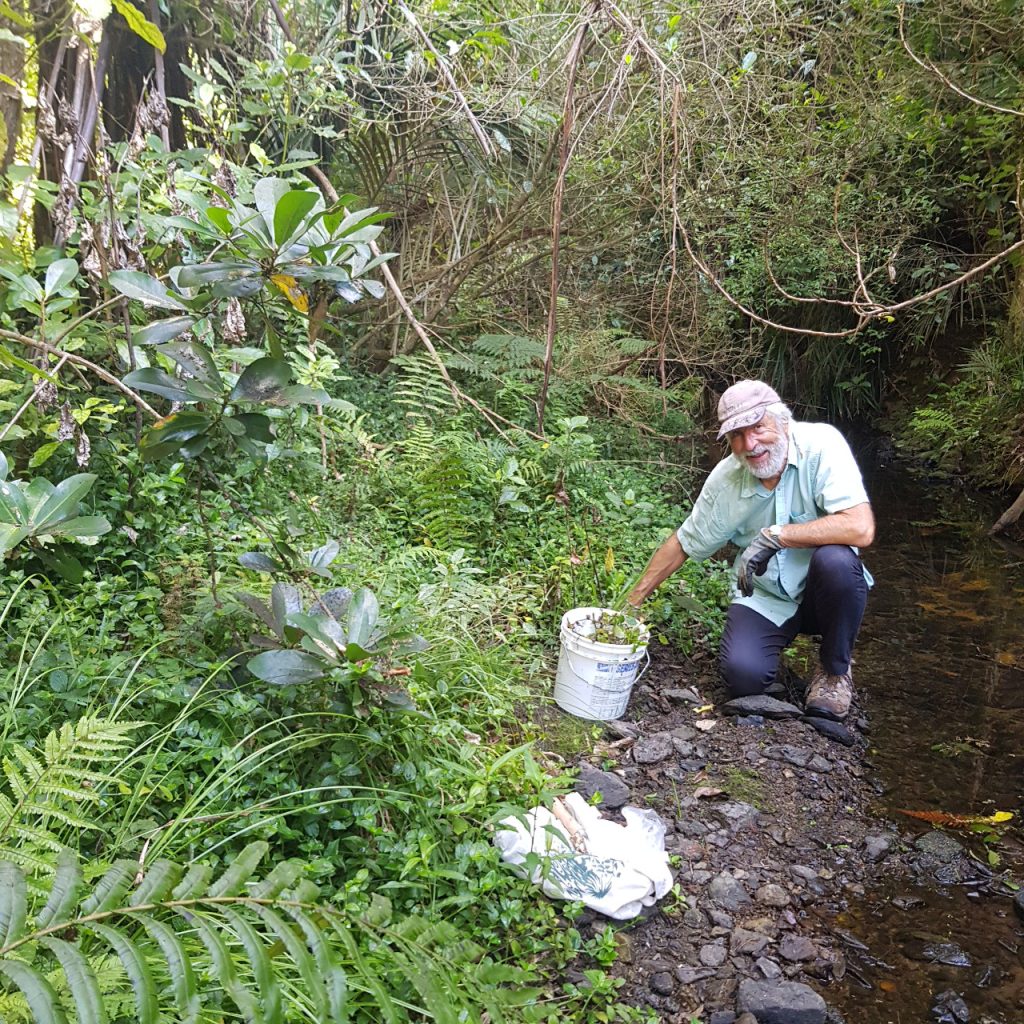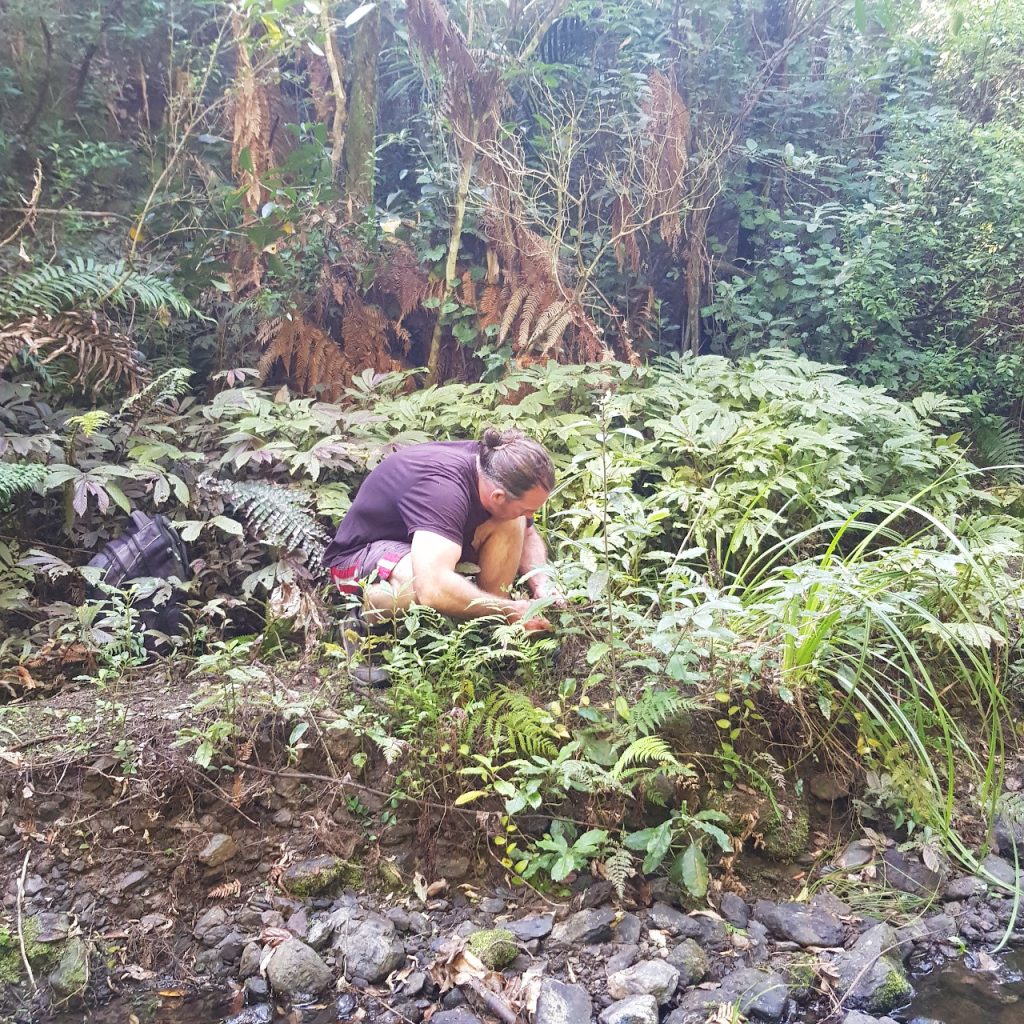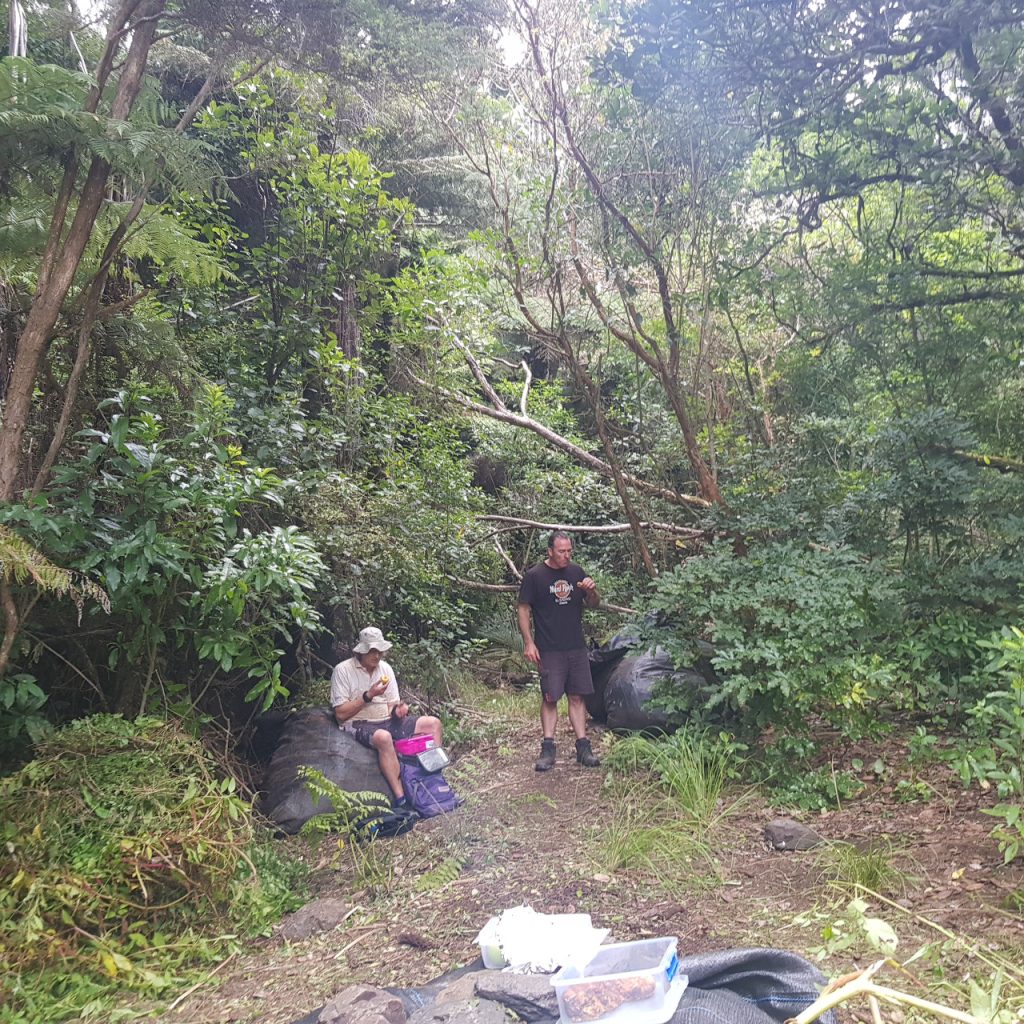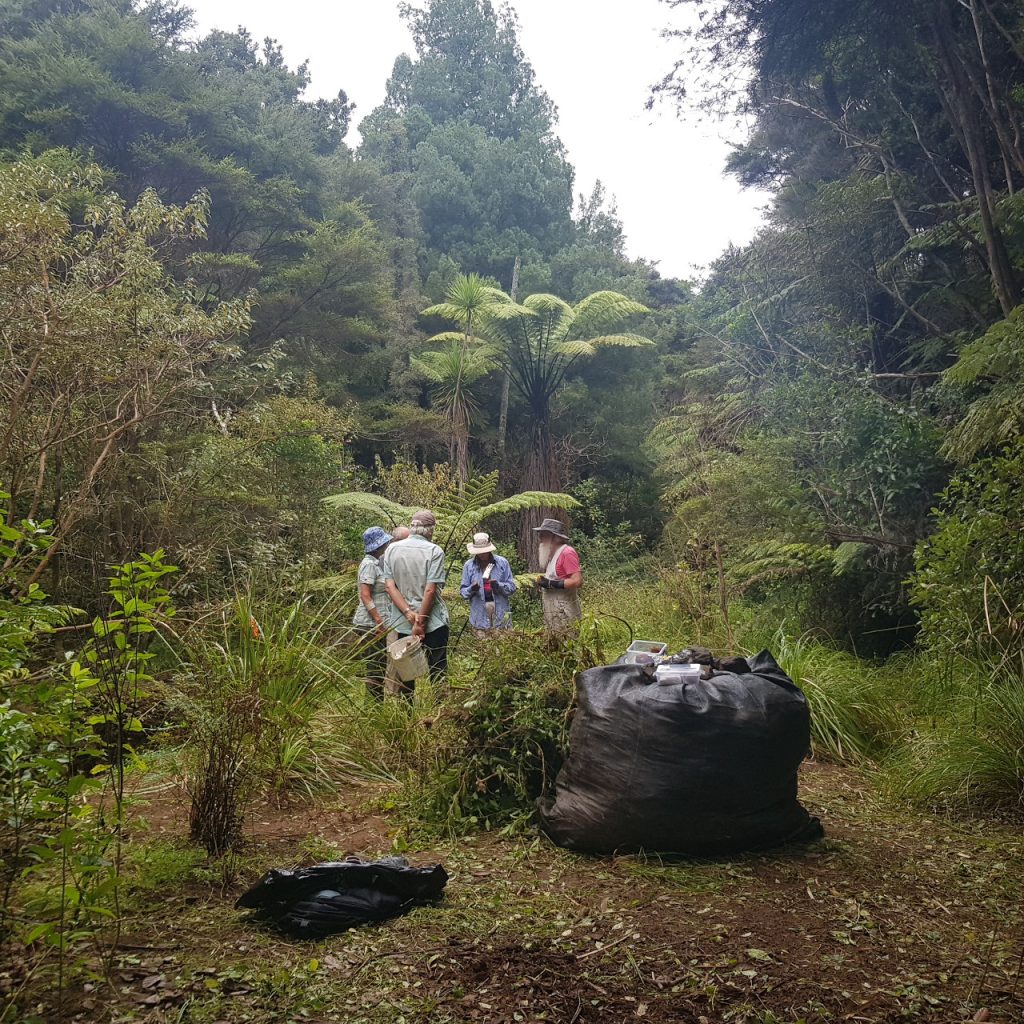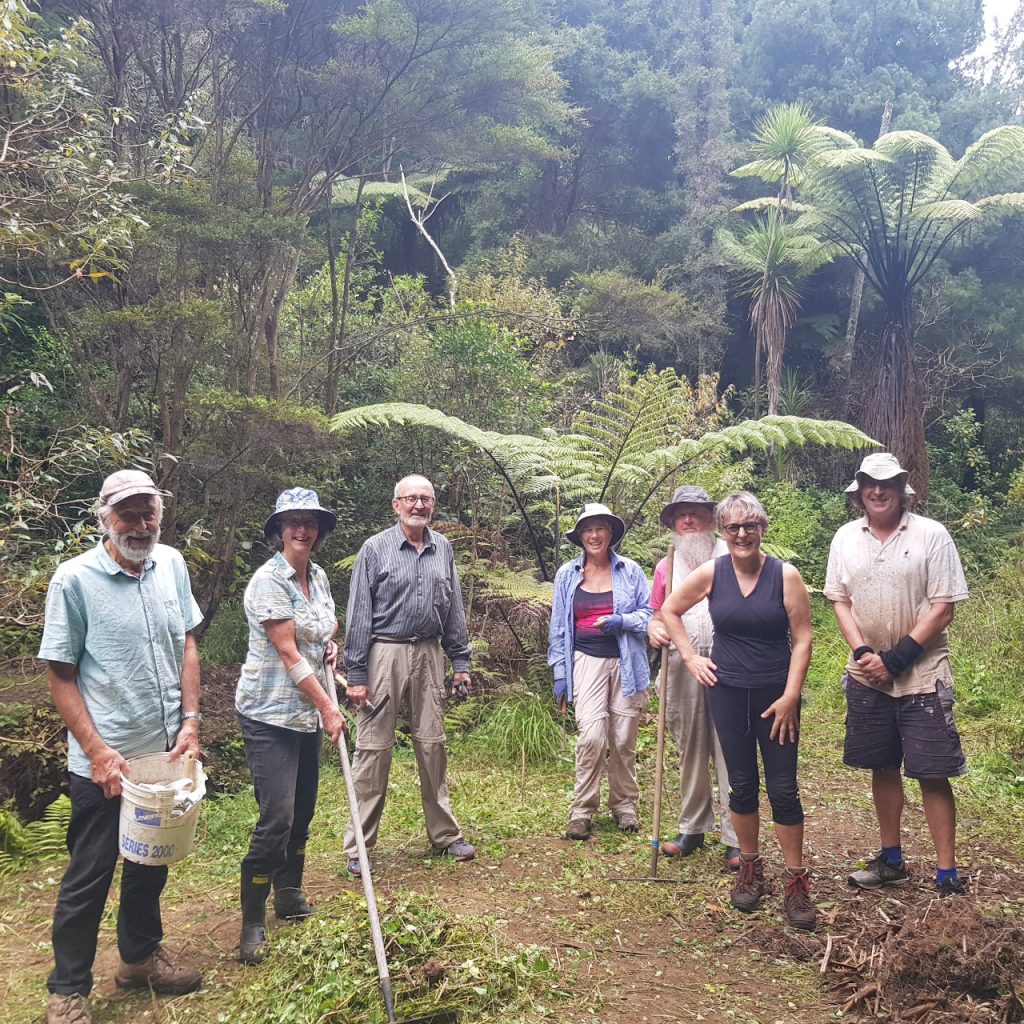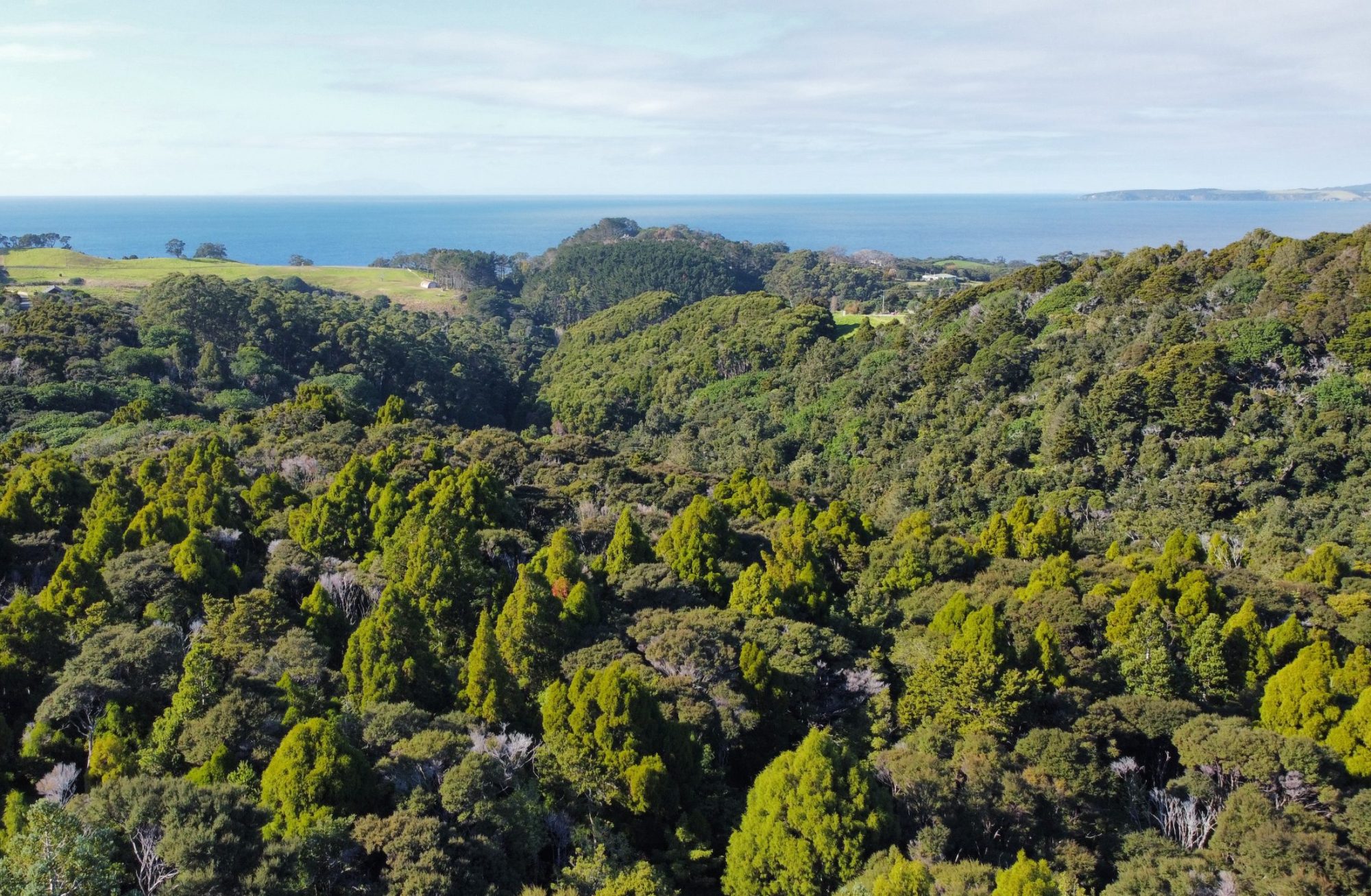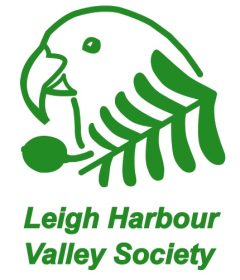We have held 5 working bees during February, amounting to approximately 190 volunteer hours. The primary focus has been clearing Tradescantia from the borders of the stream and climbing asparagus at the top of the valley. Chris Wadsworth and Keith Paine have contributed approximately 60 more hours to the project on top of the many hours they have already volunteered. Chris, who has a wealth of experience in bush restoration has summarised some of his observations:-
- Cleared tradescantia areas showing excellent signs of revegetation with Fuchsia exorticata among many other species
- Evidence that pratia angulata is self-propagating (vegetative)
- Found and photographed centella uniflora; a good compliment for stream bank plant communities. Grows well with Oplismenus Hirtellus
- Observed bright white fungus fruiting up to a metre high on the trunk of a dead Mamaku (Cyathea medularis). This seems a rare event.
- Found a male juvenile tree weta on my neck
- Observed fruiting Dianella Nigra on the coastal walkway
- Karaka (Corynocarpus laevigatus) seedlings transplant well if the tap root doesn’t break.
- ‘Bastard Grass’ (Hook sedge, Carex uncinata) seeds attach readily to hair limbs and digits
- Observed Parataniwha (Elatostema rugosum) seedling on cleared stream bank
- Observed Toatoa (Haloragis erecta) at several sites. Along with many other species, Toatpoa will help suppress Tradescantia.
- Removed Evergreen Buckthorn (Rhamnus Alaternus) from stream bank.
- The entrance to the stream has an exotic grass growing around where the Saltmarsh Ribbonwood (Plagianthus divaricatus) is planted
- Great year for cicadas (approximately 40 native species spend 17 years underground)
